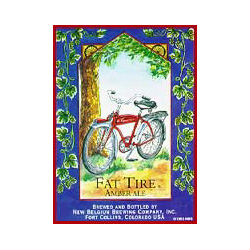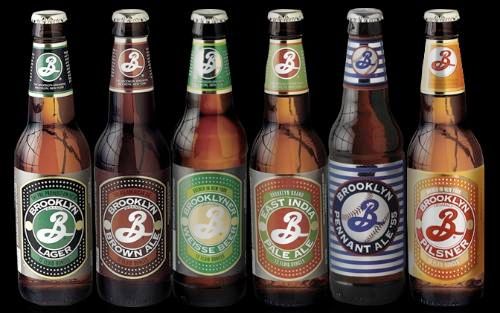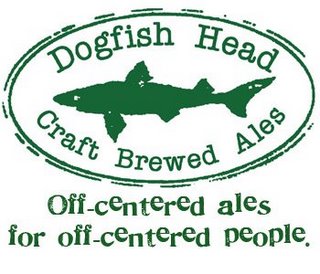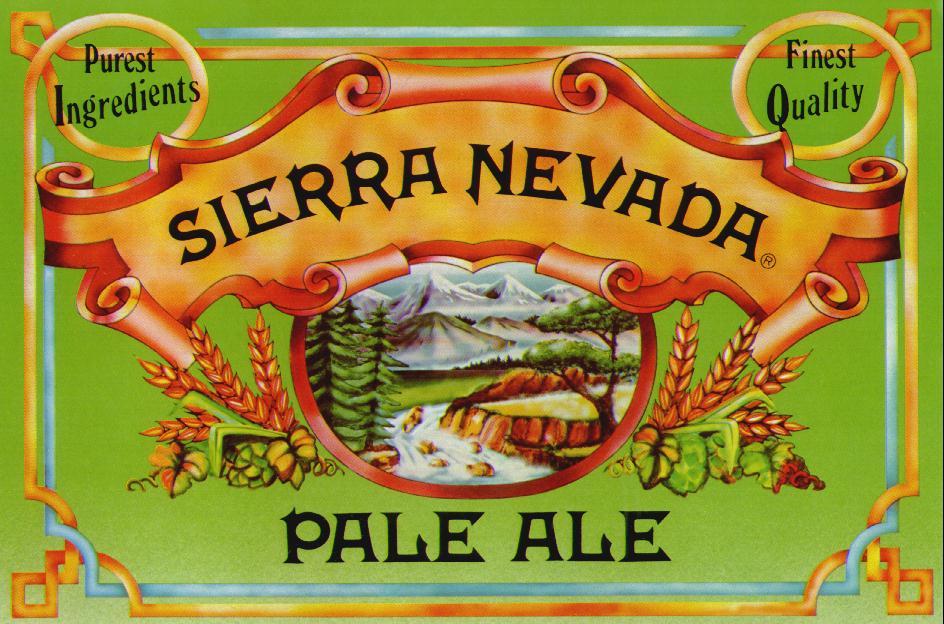

Mar 24th, 2009 by David Flaherty
Mar 22nd, 2009 by David Flaherty
 There are innumerable similarities between what I drank yesterday and what the great man in tights drank. And so, in some bizarre, cosmic twist, time repeated itself in the beer world.
There are innumerable similarities between what I drank yesterday and what the great man in tights drank. And so, in some bizarre, cosmic twist, time repeated itself in the beer world.
I found myself (for the third time) at the Manhattan Cask Ale Festival at Chelsea Brewing Co with the Hudson river lapping at the doorstep. The sun was shining and the metal casks gleamed in the light like liquid jewels, all lined up for the sipping.
Cask-conditioned ales are natural, unfiltered, unpasteurized beers made in the same vessel they are later served from, just like in the olden days. After going through the primary fermentation, the beer is transferred from the fermenting tank to the cask without removing the yeast or sediment. A primer is added as a super-starter for the yeast still in the beer, and ba-de-bing! Fermentation starts again, releasing CO2 and thus carbonating the beer naturally.
Its different from the beer out of the standard tap, as they are force-carbonated by an outside pressure source. And on top of that, for stability sake, they are filtered and the yeast cells and sediment are removed before landing at your local TGI Friday’s. But not cask ale–everything is in there. Nothing is removed. And you can taste the difference.

So there I am looking out over the water, sipping on a delicious Chelsea ’90 Shilling Scotch Ale’. The bubbles were natural and the beer had a freshness to it.
Mar 14th, 2009 by David Flaherty

Too tempting for Utah?
If you want to get a drink at a bar in Utah, you are required by law to fill out a membership application, and pay a fee for the right to enter the “private club”. By making it more difficult to walk through the door, the state believes they are preventing under-age and casual drinking. But boy does this prevent the tourists from coming in (as well as their dollars). So what do we do, O wise legislators? How do we make our businesses more accessible but still maintain the moral high ground?
Well, three cheers for Senator John Valentine, who has proposed a bill (gaining some traction, mind you) to eliminate this requirement and, instead, erect a ten-foot wall in bars and restaurants from behind which the bartender must hide his or her bottles and make their drinks out of sight to protect children from the temptation of drinks being mixed before their eyes. Called the “Zion Curtain”, Senator Valentine has shot straight to the heart of our kids’ desire to drink, and by removing all shiny bottles and bartender showmanship from the eye of the beholder, young Utahans will therefore be encouraged to drink less.

What a plan! What a genius! Strip all drama and aesthetic style from your bars and turn them into mere feeding stations for destitute human wastoids to pull up and receive their medicine from a slot in the wall! A speakeasy without the bar…. you walk up to the door, the panel slides open, an unfriendly voices yells “what ya want, loser?” (because obviously any sense of hospitality in the service itself only encourages you to drink more), and a vile-looking, black, thick liquid is handed back in a paper cup (to obviously discourage kids from finding any sort of wonderment in the glassware itself). Food coloring, a gelatin thickening agent and a sulfur pill are further added to strip the drinks of any textural, visual or aromatic enjoyment. Why not make the atmosphere more like a dental office? You’ll receive your dose of alcohol, miscreant, but it will be through a dental dam. How about fast food required to be ingested rectally? Wow. The possibilities are endless.
Now I’ve been to Utah numerous times, and I must say the natural beauty of a place like Arches National Park is stunning; in fact, it was some of my favorite camping ever (and I’ve CAMPED, mothafuckas). But when I walked into a liquor store that’s when I saw what was morally going on behind-the-scenes of all this beauty. Every step of purchasing a six-pack of beer had been meticulously designed to not only discourage me from popping the top on that tall boy as soon as I climbed back into my big rig, but to discourage me from ever wanting to step foot in one again. Continue Reading »
Feb 26th, 2009 by David Flaherty

So what’s the deal with absinthe, anyways? Am I gonna trip my balls off or what? Am I gonna find myself chasing dragons and horned demons through the nether world? Well, absinthe (and its supposed hallucinogenic qualities) is thick with folklore and now certainly back on the world stage in a flourish and this after a long respite…almost a century’s worth. But let’s start at the beginning. Just what is absinthe and how did it get this infamous reputation?
Absinthe is a high-alcohol, anise-flavored spirit made from herbs, flowers and leaves of a medicinal plant known as wormwood. It can often sport an alcohol level of 70%…that’s 140 proof! Often times it has a natural green color but can also be clear.

It was the bell of the ball in Paris during the 1800’s, and was a favorite among artists and high-class ladies of the night. Images of the troubled 18th century artist in some slummy Parisian apartment come to mind, riding some hallucinogenic wave of insanity. It was shunned by many as risky and unrefined, but the likes of Oscar Wilde and Vincent Van Gogh were huge fans.
It all came to a head in the early 1900’s, and was banned in America in 1915 because it contained the chemical, thujone. Absinthe was thought of as a hallucigenic, and thujone was thought to be the culprit. But how did we end up this association with the drink as a rocket shot to the moon? Well, that’s the rub. Absinthe use was misunderstood and due to a rather gruesome murder that I’d rather not go into involving a man who drank two glasses of absinthe (followed by an exorbitant amount of liquor and beer), a powerful campaign was set up to ban it and it quickly became a scapegoat for all sorts of evils (which mostly turned out to be the ravages of alcoholism).
Feb 17th, 2009 by David Flaherty

Sipping on authentic, handcrafted libations is the same as sinking your teeth into a beautiful piece of sushi, or pulling the meat off the bone of a slow-cooked rib. But drinks alone do not make a bar. In today’s cocktail world, you’ll often find unassuming entrances, dark lighting, an elaborate bar composed of quality ingredients, bartenders with sharp, near balletic, movements, and a devoted following….
Behind the idea of a modern day “speakeasy” lies the desire to capture the essence of an era, an era that birthed illicit, underground clubs that operated by their own rules, and generated loyal fanatics in the process. And today, these establishments and their mixtures fascinate us. Like jazz, many consider the cocktail an American creation.
Names like Gary Regan, Dale DeGroff, Julie Reiner, Jim Meehan and Audrey Saunders flood the scene. These mixologist/chemist/showmen are well-trained in the old standards like Fizzes, Flips, Slings, Punches, Sours, Cobblers, Shrubs, Toddies, etc, and that grounds them in a rich past, but they have built on the basics and have built towers…and often in tiny, hard-to-find spaces behind concealed storefronts and sketchy doorways. And these destinations are well worth the journey. The following is a list of eight, great NYC cocktail shrines and modern speakeasies:
THE LIST
Feb 10th, 2009 by David Flaherty

The kitchen has truly migrated to the bar. Cabinets have been ransacked, ingredients have been lifted and spun off in wild directions, and bartenders have become mixologists (the closest term to describe the tinkering, oft mad geeky pursuit of flavor and fascination with combinations…the building of formulas a la the chemistry beaker). In the midst of this madness, they have lifted vinegar, and its sour flavor profile, to the level of respected cocktail component, the trend even appearing in the hallowed pages of the Washington Times.
Bartender Kelley Slagle of Hearth Restaurant has been experimenting with vinegar and has come under its spell, utilizing it in four, soon to be five, cocktails giving them a signature zip of sourness. Made by oxidizing the ethanol in wine, beer, cider, or any fermented fruit juice, vinegar gives drinks an acidic backbone that plays opposite its fellow ingredients, heightening them.
Kelly’s recipe for the Marc Antony uses a gastrique of vinegar, a process utilizing sugar and heat to reduce the liquid down until the water is almost evaporated. This recipe is an orange cardamom gastrique made by adding orange juice and cardamom seeds.
2 oz Spanish Brandy
1oz Orange Cardamom Gastrique*
Shake and strain into rocks glass, on the rocks garnish with orange twist
Feb 7th, 2009 by David Flaherty
Founded: 1991
Production: approx 437,000 barrels
(website)

The place that started it all. My own beer revolution. “Fat Tire” was her name. And she was delicious and demanding; pay attention to me!, she said. And I did. I took note. For the first time ever in my, albeit young and naive, life, I stopped and payed attention. Really asked myself, what am I tasting? And that’s when I GOT it. I felt connected to the Germans and their intricate beer steins my father collected in the basement; I thought of the Englishmen with waxed mustaches and elegant manners sipping the Bitter. I did not know that what I was tasting was an introduction to Belgium; a country and a style of beer that takes you by the horns and casts you into a world of depth of flavor beyond what you ever thought possible (Lambic? What the f?). But this beer I grew up with, this beer with the beautiful label of the bike leaned on a tree while you eat your picnic basket in a Belgium wheat field, this beer started my journey and cemented a foundation of beer experiences to come. “You never forget your first”, I believe the saying goes…
In 1989, at the age of 32, Jeff Lebesch was riding his fat-tired bike through Europe’s famous brewing towns and was astounded by the beer he was encountering. Riding on one’s bike always brings up the renegade feeling for me; I used to race road bikes and I recall often feeling like a cowboy alone on his horse on the prairie or zipping up and down the foothills for hours at a time. A one-man survival machine, with all necessary tools to allow yourself to trust being so far from civilization that your mind quiets and your thoughts tune into focus. But back to Jeff…He returned with new familiarity with different ingredients and went straight for Belgium. Brewing in his basement, he crafted two beers that would launch New Belgium: a brown Dubblel with rich, toffee flavors he named Abbey and Fat Tire, his American Amber beer with a biscuity, toasted maltiness backed with a balancing freshness of hops that exhibits a broad range of light, fruity notes. Today, they have an ever-expanding portfolio of brews that range the gamet in style.
But thats not even remotely the end of the story. Without the contributions of his wife, Kim Jordan (now a renowned CEO), all that existed was some great beer. Nothing else. Together, they built a brewery based on founding principles they wrote together while on a hike through Rocky Mountain National Park with a jug of a home brew and a pen and a pad of paper. Emphasizing eco-friendly practices and employee ownership, they’ve gained a devoted workforce that has very little turnover because they’re happy. They ride on frickin bikes, for gods sake! Its like something out of Willie Wonka and the Chocolate Factory, this bizarre crew of beer craftsmen zipping on bikes from building to building. Not only that, but they’ve built a massive, two-wheeled following with their annual event Tour de Fat. A professional bike racing tour/traveling circus that moves from town to town, with each stop culminating in a mass ride of costumed bike fiends from every ilk and sector blowing it all out in celebration of the wheel.
Jan 31st, 2009 by David Flaherty

Jan 8th, 2009 by David Flaherty
Founded: 1995
Production: approx 35,000 barrels
(website)

Extreme. Fire up the frickin taste buds, because these guys are doing some funky, bold beers. Using such ingredients as fresh oysters, arctic cloudberries, green raisins, st johns wort, and beet sugar, they’re off to the races..and running like mad greyhounds. Sound interesting? How bout their Malt de Liquor; a bottle-conditioned malt liquor served in its very own brown paper bag. Now that’s street-swilling in style.
They seem to be everywhere in the media at the moment, their classic fish-shaped icon appearing so much you’d think you’d popped your head in the aquarium, and they deserve to be. The American Homebrewer’s Association has picked their 90-Minute Pale Ale as their top-voted beer two years in a row (and who ain’t gonna listen to the legions of home chemist/hop geeks/brew monks/flavor-craving-crowd of die-hards when they sound their collective horn). Like all the other brewers in my top 5 list, founder Sam Calagione is passionate. But his passion lies in pushing the limits of imagination and what’s possible to capture in liquid form.
I got it in my craw to make a Pumpkin Ale a couple of months back (“Praise the Gourd”), and did a lot of reading and tasting to get familiar with what’s out there. I found a number of approaches to this style, some over-spiced messes that wiped the spit off your tongue, and many in which no pumpkin could even be detected. I wanted pumpkin… and was happy when I got a solid backbone of gourdy goodness in my final beer (I baked fresh pumpkin sprinkled with brown sugar until caramelized and placed in a hop sack during the boil as opposed to with the malt extracts–believe it or not, a much-debated question of timing in the homebrew community).
Of all those I tasted during my ride down gourd lane however, I most dug the Dogfish Punkin Ale. It was hearty, well-spiced and evocative of children wearing spit-filled rubber masks greedily running from door to door through the brisk Colorado air. It brought me back to my childhood and the details you remember: A chill in the air. Strange cutouts of witch silhouettes in the windows. Yards filled with thick spider webs capable of swallowing children whole. I think you get the picture… That power was what hooked me to Dogfish. That “style”, and how it took you on a ride. Their beers are rich and full of depth like dark Syrahs from the Northern Rhone–embodied with soul.
Jan 3rd, 2009 by David Flaherty
Founded: 1979
Production: approx 680,000 barrels
(website)

No god-fearing microbrewer could ever not bow down in worship to Sierra Nevada. It would be an outrage. I would have to throw my shoes at you. (I still think it would have been off the chain if Mr Bush caught one of the shoes, centered in on the thrower with his beady eyes, and threw it back like a Chinese throwing star…but no…instead, he flinched. Anyway, back to Sierra). Sierra Nevada is a forerunner in the field of microbrewing. Practically THE forerunner in the field.
Along with Anchor Steam brewery in San Francisco, they broke new ground and shined a beacon of light into the dark night of “American Lagers” that had become ubiquitous since America’s post-Prohibition days. They shook people up. An underground following began, and people started to want more out of their grog. They wanted an experience. So, through a combination of renegade thinking and the tried-and-true techniques of the past, Sierra influenced a new wave of American brewing.
Starting from nothing, Ken Grossman and Paul Camusi cobbled a brewery together from dairy tanks, a soft-drink bottler, and equipment salvaged from defunct breweries before the term “microbrew” even existed. And now, Sierra Nevada Pale Ale is a three-time gold medal winner at the Great American Beer Festival (an annual gathering composed of louts and connoisseurs alike who descend on Denver in staggering numbers every year to guzzle or swirl their way through a ridiculous number of beers). It represents for me the solid choice you’ll find on A LOT of beer lists around the country. When in doubt, you’ll oft hear a chirpy waitress list Sierra’s name in amongst the long list of mostly domestic swill you’ll find the country swimming in.
Oct 29th, 2008 by David Flaherty

If you’re anything like me, the onset of fall means leaves crunching below your feet (or was that a dried profelactic washed into the gutter?), the smell of chimney smoke in the air, and the spicier beers in my Tiffany’s crystal mug. So fire up the Oompah band, Heinrich, it’s time to strap on the suspenders and raise a glass to our German comrades…but I guess the real question is: what the devil are we celebrating? October? Fall? The end of sweat marks in our armpits?
Well, nobility actually. And german nobility at that. First held in Munich on October 12, 1810 to commemorate the marriage of Crown Prince Ludwig and his buxom bride Princess Therese of Saxe-Hildburghausen (try to remember THAT name while playing a game of Asshole at the Epsilon house), the festival honored the merry couple with the finest grub and grog, finally culminating in an elaborate horse race on October 17th. And thus, the party was born:
Oktoberfest is now a sixteen-day, suds-heavy affair held each year in Munich, Bavaria, Germany in late September and early October. “Oktoberfestbiers” are the beers that have been served at the event in Munich since 1818, and are supplied by 6 breweries known as the Big Six: Spaten, Lowenbrau, Augustiner, Hofbrau, Polaner and Hacker-Pschorr. Tourists the world over flock to this village for a Mardi-Gras like party atmosphere to nosh on rich and hearty traditional fare like white sausage (weisswurst), knuckle of pork (haxn), potato dumplings (knodeln), roast pork (schweinsbraten) and grilled fish on a stick (steckerlfisch). And to further rush the fat and oodles of butter through their systems, they drink the beer…and lots of it. In 2007, the 174th Oktoberfest hosted 6.2 million visitors who drank 6.7 million liters (equivalent of 11 million pints) and ate 104 oxen.
So just what are the beers being enjoyed by the swinging beauties above?